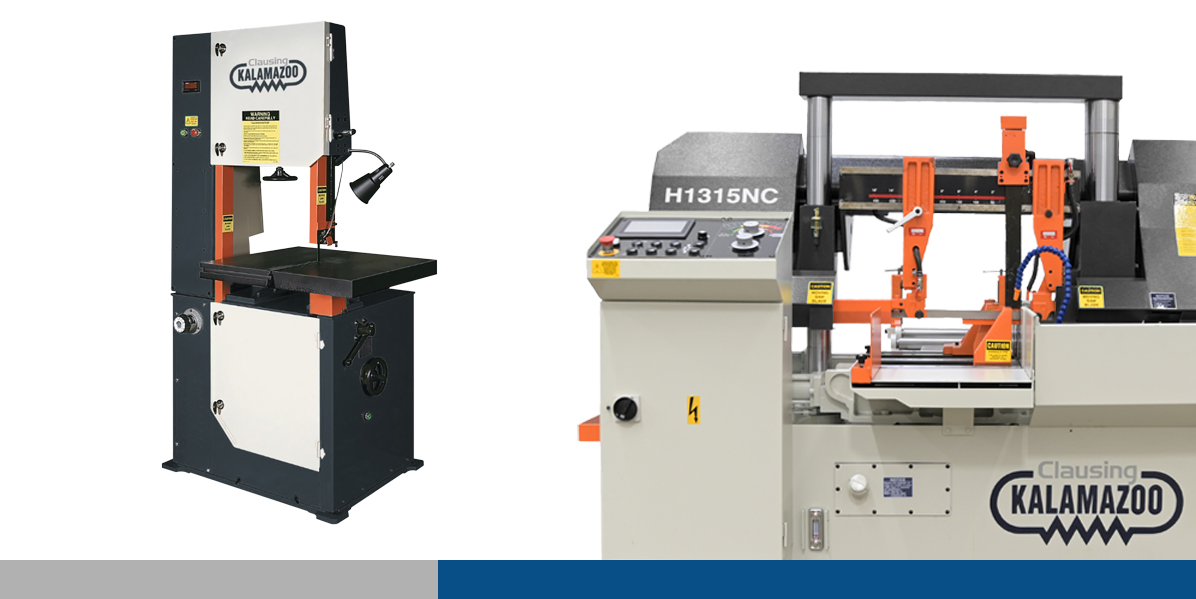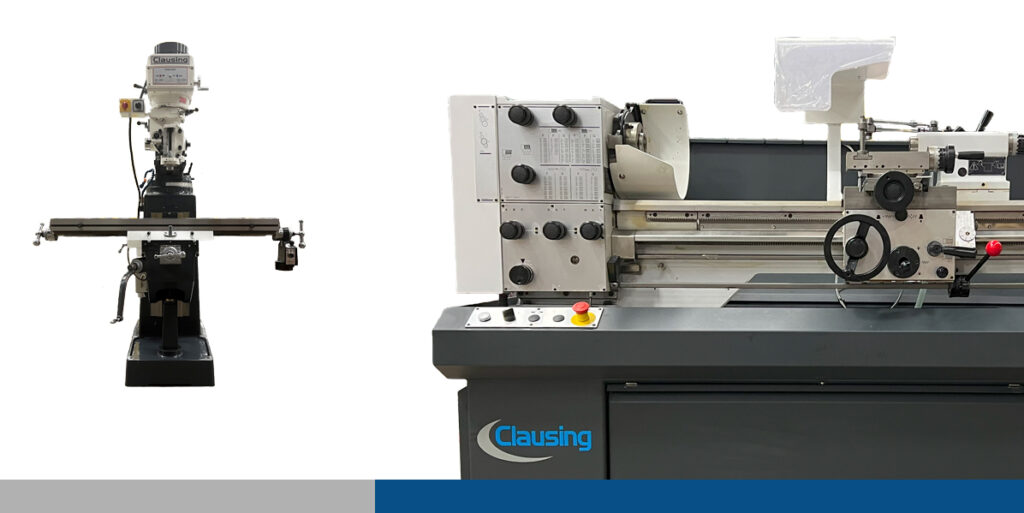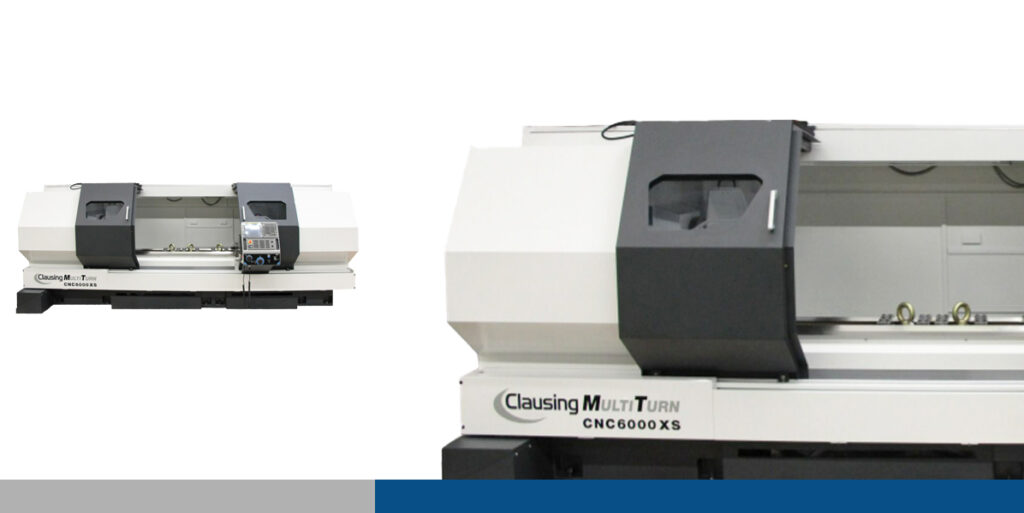Understanding Bandsaws: An Overview of Types and Functions

Understanding Bandsaws: An Overview of Types and Functions
Bandsaws have long been fundamental tools in the metalworking industry, known for their versatility and precision in cutting various metals with ease. From stainless steel to aluminum, bandsaws excel at cutting through metal with remarkable accuracy, making them a staple in fabrication shops, job shops, manufacturing plants, and more. Whether it’s shaping metal bars, tubes, or intricate components, bandsaws offer unmatched efficiency and reliability.
In today’s metalworking environment, bandsaws come in different styles, including horizontal, double column horizontal, vertical, manual, semi-automatic, and fully automatic configurations, each tailored to specific cutting needs. Despite technological advancements, bandsaws remain essential due to their ability to deliver consistent, high-quality cuts while maximizing productivity and improving process efficiency.
Manual Horizontal Bandsaws: Mastering Control for Precision Cuts
Manual bandsaws represent an essential pillar in the metalworking industry, incorporating a hands-on approach to precision cutting. Operated by hand, these bandsaws require physical exertion from the operator, who guides the saw head through the cutting process, ensuring accuracy and control. While this manual operation may demand more effort compared to automated counterparts, it offers a hands-on aspect to the cutting process, allowing operators to be in full control and adjust as needed.
Another key draw for purchasing a manual bandsaw is their low initial investment, making them an accessible option for smaller workshops and hobbyists looking to add reliable cutting equipment without breaking the bank. Additionally, manual bandsaws often boast a smaller working width or diameter capacity compared to their semi-automatic or automatic counterparts. Despite these limitations, manual bandsaws remain a popular choice for those seeking affordability, versatility, and hands-on control in their metalworking process.
Semi-Automatic Horizontal Bandsaws: Enhancing Efficiency with Automated Features
Semi-automatic horizontal bandsaws signal a significant stride forward in the innovation of metal cutting, blending automated features with operator control for enhanced efficiency. One of their defining characteristics lies in their semi-automatic operation, where automated mechanisms assist in the cutting process once the material is securely clamped in place. This automated functionality not only streamlines the cutting process but also reduces the physical exertion required from operators, allowing them to focus on other aspects of the job. Semi-automatic bandsaws often have variable blade speeds, enabling operators to tailor cutting parameters to suit different materials and thicknesses with precision. With a wider working diameter and more horsepower compared to manual bandsaws, semi-automatic models offer increased versatility, accommodating larger workpieces and diverse material-cutting requirements. In addition, these bandsaws may come with efficiency-increasing features, further optimizing performance and throughput in production environments or general metalworking processes.
Automatic Double Column Horizontal Bandsaw: Maximizing Efficiency and Streamlining Production
Fully automatic double column horizontal bandsaws offer the highest level of efficiency and precision in metal cutting technology. With their innovative design, the head moves up and down on two columns, compensating for kerf loss and ensuring consistent and accurate cuts. One of their most significant advantages is their fully automatic operation, allowing operators to program a predetermined length and number of cuts, and simply walk away, as the machine can be programmed to automatically shut off once the process is completed. Additionally, most fully automatic bandsaws offer multiple indexing capabilities, allowing for seamless batch cutting of materials.
Most automatic double column bandsaws are equipped with Smart Numeric Control (NC) technology, these machines offer unparalleled control, enabling precise adjustments and customization of cutting parameters to suit specific requirements. With an expansive working diameter, double column horizontal bandsaws effortlessly accommodate a variety of material shapes and sizes, enhancing versatility and productivity in metalworking operations. Users can better optimize efficiency with optional attachments such as bundle clamps, chip conveyors/augers, and roller tables, maximizing throughput efficiency, productivity, and streamlining workflow processes. With the fully automatic capabilities and additions of productivity-enhancing options, these saws are ideal for high-production environments with the ability to run continuously.
Vertical Bandsaws: Versatility in Metalworking
Vertical bandsaws offer a different approach to metal cutting with their distinctive structure, featuring a stationary blade and a fixed, tiltable table. This configuration provides a stable and precise cutting surface, ideal for intricate and detailed cuts. The versatility of vertical bandsaws is a significant advantage, allowing operators to execute straight cuts, angular cuts, curved cuts, and even intricate contours with ease. However, it’s worth noting that vertical bandsaws can be labor-intensive, as operators often need to manually feed the material into the blade.
Due to their vertical orientation and limited working area, vertical bandsaws may lack the ability to handle larger-sized solid blocks compared to their horizontal counterparts however, they can be ideal for smaller complex parts. These machines typically have less horsepower, which can impact their cutting ability and efficiency for certain applications. Despite these limitations, vertical bandsaws remain a valuable tool in workshops and fabrication facilities, especially for tasks that require precise and versatile cutting capabilities.
Choosing the Right Bandsaw for Your Needs: Factors to Consider
Type of Material: When selecting the right bandsaw for your needs, the type of material you’ll be cutting is a crucial factor to consider. Different metals have varying hardness levels and cutting characteristics, requiring a bandsaw with specific features and capabilities. For instance, cutting through hard metals like stainless steel or titanium may require a bandsaw with robust construction, a powerful motor, and specialized blade configurations designed to withstand the rigors of metal cutting. On the other hand, softer metals like aluminum may require bandsaws with adjustable blade speeds to achieve optimal cutting results. Understanding the properties of the metal you’ll be working with is essential for choosing a bandsaw that can efficiently and accurately meet your cutting requirements.
Shape of Material: Another key factor that is essential to take into consideration is the shape of the material you’ll be cutting. Different bandsaw designs are better suited to handle specific shapes and sizes of metal. If you’ll primarily be cutting large-diameter pipes or rectangular blocks, a double column horizontal bandsaw may be the ideal choice, offering a wide cutting capacity and stable platform for straight cuts. On the other hand, if you’ll be cutting intricate shapes or curved profiles, a vertical bandsaw with its versatile table tilting capabilities may be more suitable. Understanding the shape and dimensions of the materials you’ll be working with is a key consideration when looking for a new bandsaw.
Blade Type: The type of blade is a critical consideration, as it directly impacts the cutting performance and efficiency. Different materials require specific blade types to achieve optimal results. For example, carbide blades are ideal for cutting hard metals like stainless steel or titanium due to their durability and heat resistance. Bi-metal blades offer versatility and can handle a wide range of materials, making them a popular choice for general metal cutting applications. Carbon steel blades are suitable for softer metals and provide a lower-cost option for less demanding cutting tasks. Bandsaw blades are simple to change out but can be costly to acquire depending on how often they need to be replaced. Bandsaw blade life can be affected by the type of material being run and whether the saw is in consistent use, which can increase or decrease blade life. Then, considering the tooth pattern of the blade is essential for achieving the desired cut quality and efficiency. Blade tooth patterns such as raker, wave, and straight offer different cutting characteristics, allowing operators to tailor the blade to the specific requirements of their cutting applications.
Working Capacity: As outlined throughout the article, the working diameter of the bandsaw will be a crucial factor to consider when looking into purchasing a bandsaw. The working capacity of a bandsaw refers to its maximum cutting capacity in terms of material size and thickness. For applications involving large and heavy workpieces, a bandsaw with a larger working capacity, such as a horizontal bandsaw with a deep throat depth and cutting height, may be necessary to accommodate the size and weight of the materials. For smaller-scale projects or precision cutting tasks, a bandsaw with a more modest working capacity may suffice, offering greater maneuverability and control. Understanding the size and dimensions of what materials you will be cutting now and, in the future, will play a crucial role in deciding on the ideal bandsaw.
Attachments: The availability of attachments plays a crucial role in enhancing efficiency and productivity. Depending on the scale and nature of your cutting tasks, various attachments can be essential additions to your bandsaw setup. For high-production environments, bundle clamps offer a practical solution for securing multiple workpieces simultaneously, streamlining the cutting process, and maximizing efficiency. Chip conveyors/augers are invaluable accessories for removing debris and coolant from the cutting area, ensuring a clean and safe working environment while minimizing downtime for cleanup. Conveyors for longer stock facilitate the seamless feeding of extended workpieces, enabling continuous cutting without interruption. Integrating these attachments into your bandsaw setup can significantly enhance operational efficiency and workflow optimization, leading to improved productivity and cost-effectiveness in your operations.
Safety: Safety considerations are critical when selecting the appropriate bandsaw for your needs. Different bandsaw models offer varying levels of safety features and capabilities, which are crucial for protecting operators and preventing accidents while operating. Look for bandsaws equipped with safety guards, blade guides, and emergency stop mechanisms to minimize the risk of injury during operation. Also, bandsaws with integrated safety features such as automatic blade tensioning systems and blade breakage sensors provide an added layer of protection against potential hazards.
Clausing Kalamazoo Saw Line
Clausing prides itself on offering a comprehensive selection of bandsaws tailored to meet a diverse range of metalworking needs. Whether you require a double column horizontal bandsaw for maximum capacity and efficiency, a versatile horizontal bandsaw for general metal cutting operations, or a vertical bandsaw for intricate cuts and contours, we have you covered. Our lineup includes manual, semi-automatic, and fully automatic bandsaws, each equipped with unique features to enhance efficiency and productivity in metalworking operations. With safety and reliability at the forefront, the Clausing Kalamazoo Saw Line offers a solution for every metal cutting challenge, ensuring exceptional performance and durability in every application.
Related Posts
Latest Posts
Categories
Article
Guide
Tips
Topics
CNC Machines
Standard Machines
Tags
Clausing
CNC Lathes






